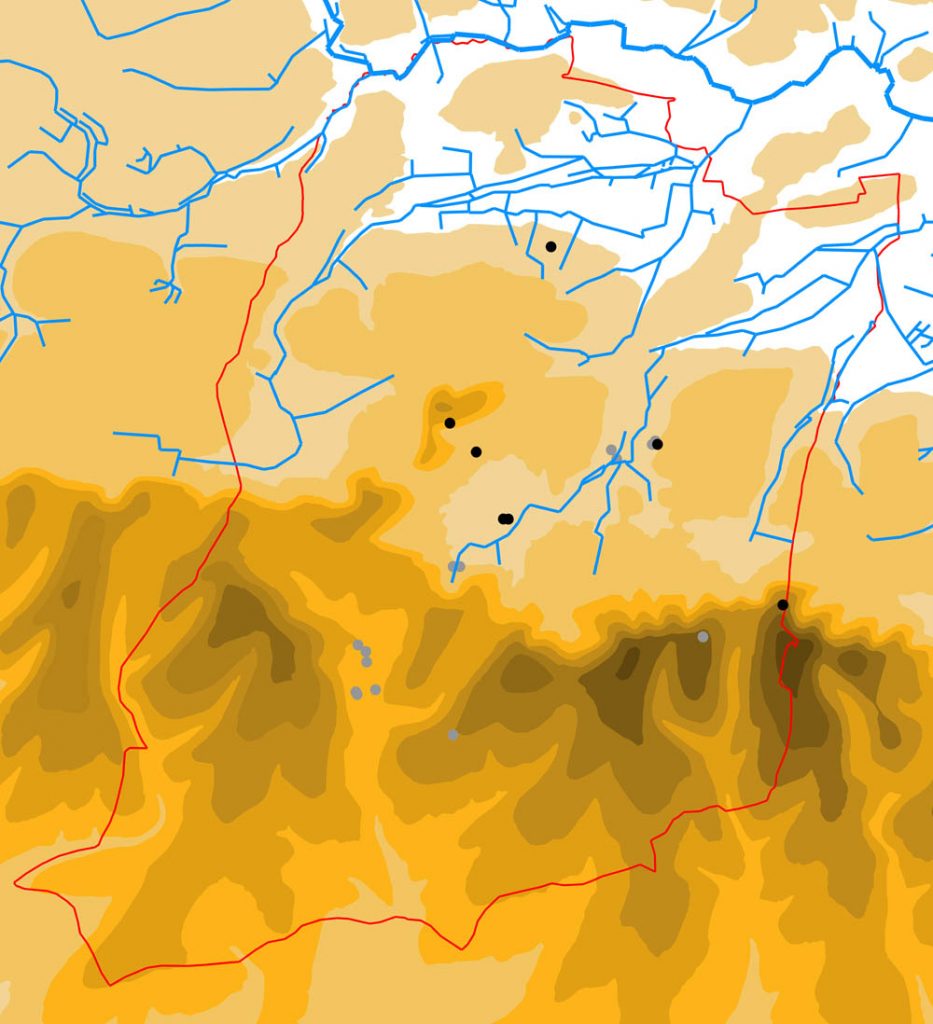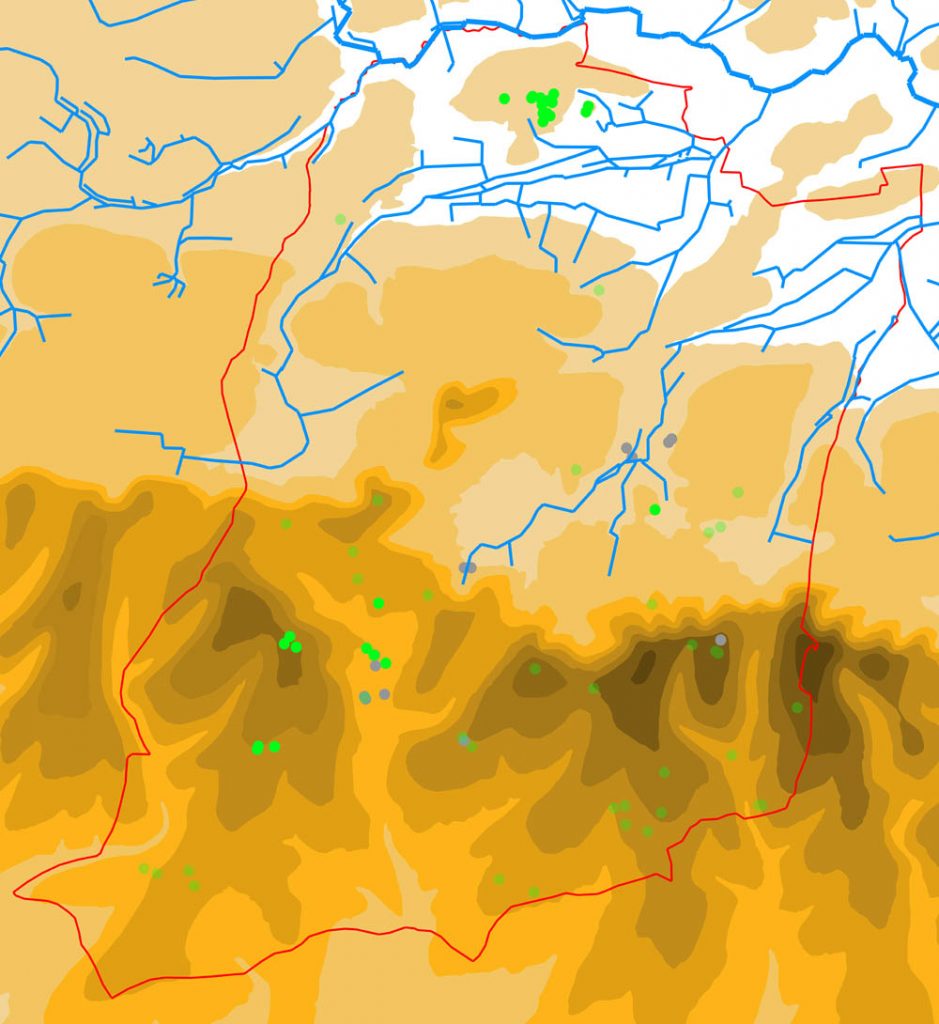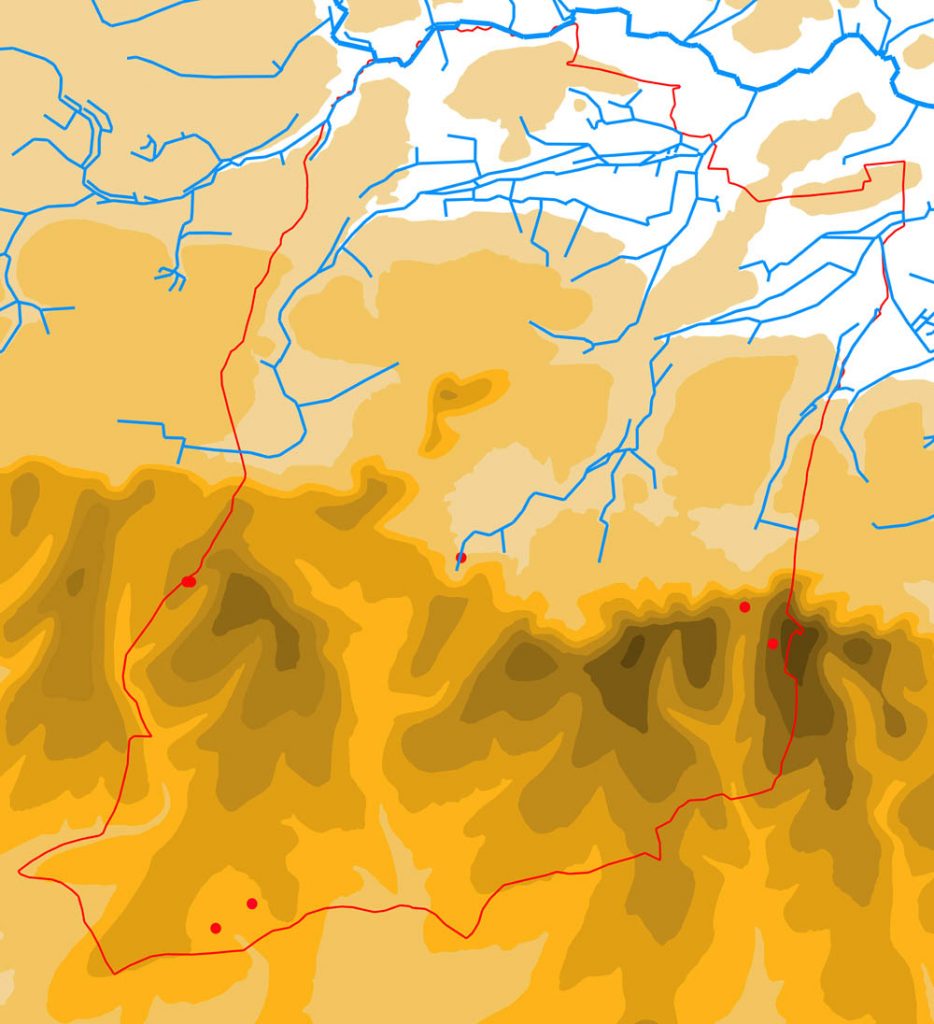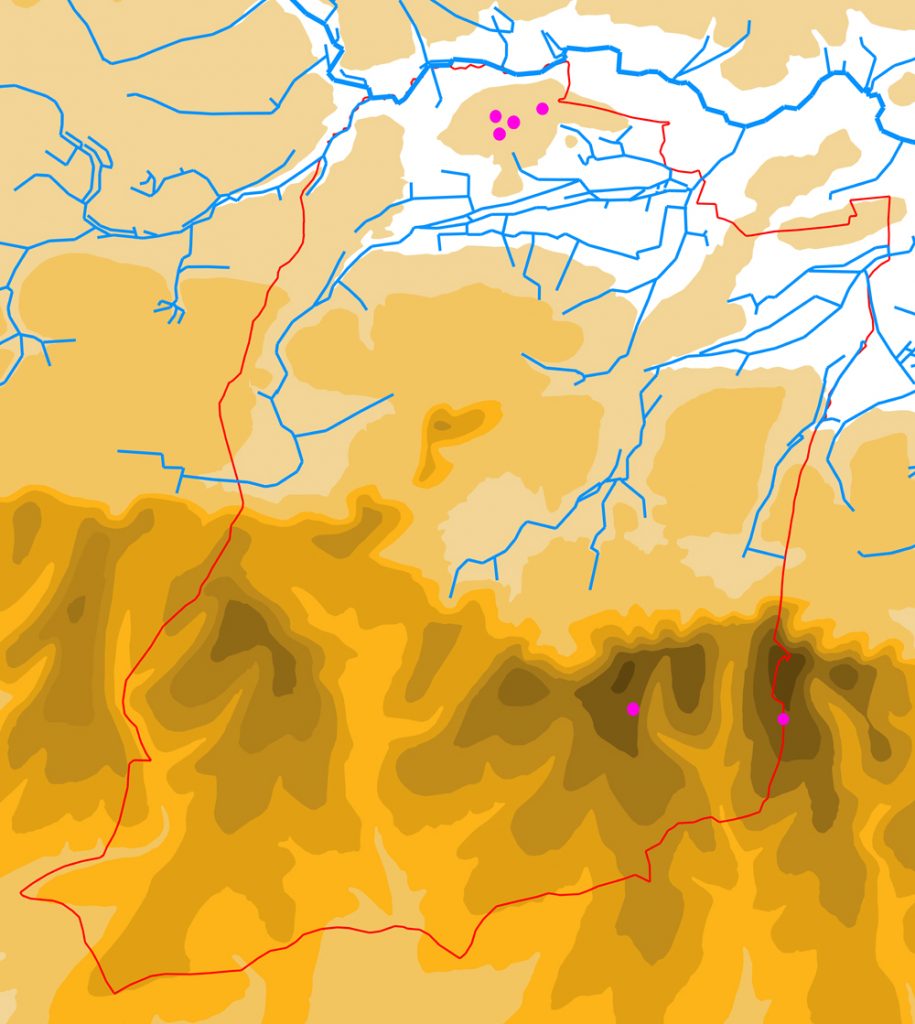Evidence for the Neolithic in Harting does not extend above a few flint implements – no evidence for Neolithic houses has yet been found, nor have any Neolithic burials been discovered. But this is not unusual, very few of the former are known nationally, and only a limited number of the latter. What we can say is that people were definitely around, since they have considerately dropped a number of their flint tools for us to pick up. The map below shows the distribution of confirmed Neolithic flint axes and arrowheads found within the parish, together with scatters of other worked flints that fall into either the Neolithic or Early Bronze Age. [N.B. The Neolithic began in roughly 4000BC and the Early Bronze Age ended in about 1500BC. The division between the two is constantly being pulled about and redefined, but the shady area in question is around 2500 – 2200BC]

Little can be said about Neolithic occupation beyond the fact that they were here, although it is perhaps noteworthy that nearly all the axes come from the lowlands of the parish, possibly suggesting that the focus of activity was there, rather than on the Downs.
The early Bronze Age is dominated by barrows (burial mounds). It is an often stated and only slightly flippant comment, that the Bronze Age seems to have been largely populated by the dead, while the succeeding Iron Age appears to have only consisted of the living. Certainly there is a national shortage of known Bronze Age settlements, particularly from the early Bronze Age, and Harting is no exception, with none known at all. The usual explanation is that in the Bronze Age personal possessions were either few, or leave little trace in the soil, making it much harder to find where they live than in the succeeding Iron Age and particularly Roman periods, when people seemed to like nothing more than chucking their rubbish around for us to pick up in the ploughsoil of our fields. But there will certainly be some Bronze Age settlements within the parish, and the best hope of finding them is probably by looking for concentrations of worked flints in the ploughsoil, which may indicate dwellings beneath.
It is, however, a different story when it comes to death. For Harting, like much of the rest of the country, has many examples of early Bronze Age burial mounds. These largely fit within the period 2200-1500BC, after which, in the Middle and Late Bronze Age, people seem to have given up on the idea of constructing them.

There are two broad types of barrow, the mound variety and the enclosure type. The former, as you might have guessed, consist of a mound piled up over the burial(s), whereas the latter are composed of a circular bank and ditch, defining a central space, within which the burial or burials are placed. There are currently no confirmed examples of the latter within the parish, although they do exist elsewhere within the Rother valley. Examples of the former, however, are relatively plentiful. You will notice on the map above that they seem to major on the Downs, with far fewer in the valley, with the exception of a dense group at the West Heath sand quarry. This might be slightly deceptive, since more are likely to have survived on the Downs than in the valley due to subsequent ploughing – essentially they were more in the way in the lowlands.
The only barrows to have been archaeologically excavated are those at West Heath, so little is known about all the others, save that three burial urns have been ploughed up over the site of one on West Harting Down (x2), and one at East Harting (x1). It is generally assumed that those on the Downs in Harting are constructed of chalk and flint, since that is the obvious local material, but this is yet to be confirmed. The excavated barrows at West Heath were instead constructed of sand and turfs. These barrows formed a compact cemetery, consisting of about a dozen mounds, nine of which were examined between 1973 and 1980. The cemetery forms one in a chain of such barrow clusters, running along the Rother valley between Petersfield and the Arun, all sitting on the south side of the river. They probably each lay within the territory of a separate community, who used the site as a place to inter select individuals. I use the term “select” deliberately, since only a tiny minority of individuals would have been placed under or into a barrow, the vast majority being disposed of elsewhere in much less glamorous ways.
Before leaving the Bronze Age behind (I may return to talk more on the West Heath cemetery excavations in a later blog) the evidence for the Middle and Late Bronze Age needs to be set out. Again we are left with only objects, since there are no settlements known and, since the end of the Early Bronze Age, no dead people either. Rather than flints, however, the objects for these periods are all in metal, either Bronze or gold.

Most of the finds are individual stray artefacts, including knife, sword and axe fragments, a gold ring, and a complete socketed axe. However there are two exceptions: excavations in 1949 into the ditch around the hillfort on Beacon Hill (more on this in a later blog) found two gold penannular rings, probably deliberately buried in a later period; and the other was a hoard containing two bracelets, two axes and a knife fragment, found somewhere in the parish (if anyone knows exactly where, let me know!).
Well, that is it for life up to the end of the Bronze Age – the next step, should I continue chronologically, is the Iron Age, where the local action hots up considerably.

